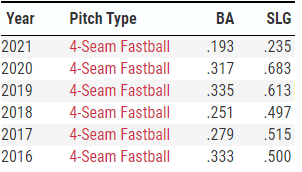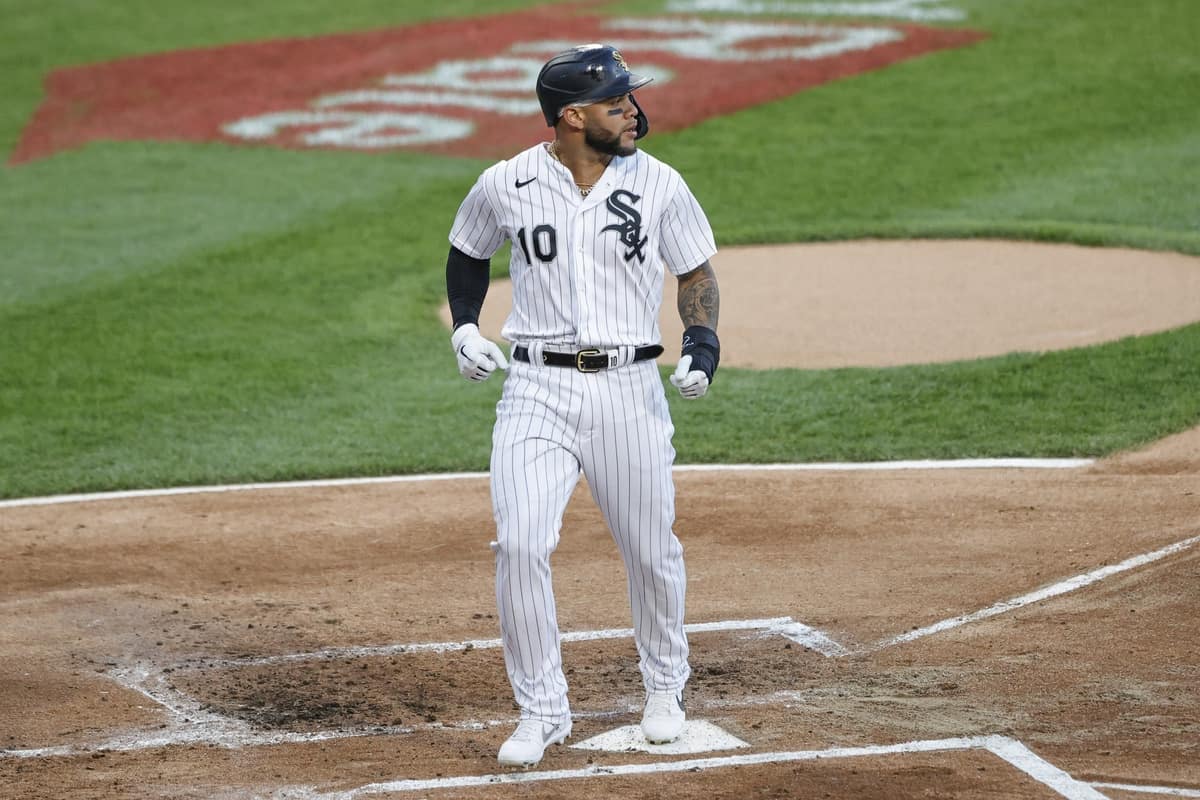More so than any player I can remember, Yoan Moncada's 2021 season has been evaluated through the lens of what individual people expect from him rather than what he's actually accomplished. While that's a plenty reasonable way to look at players with established performance levels, Moncada is in his fifth season with the White Sox and it still feels like we're learning what kind of player he is. None of his full seasons with the team resemble one another.
- 2018: Loud tools on display, but strikeouts and a passive approach rendered him average
- 2019: A star turn, complete with high batting average and strong power numbers
- 2020: Gets on base enough to keep the line moving, but COVID-19 sapped his vigor
- 2021: Career-best walk and strikeout rates, but the power from 2019 has not returned
Just about the only constant seems to be that he's become a strong defender at third base, which can paper over shortcomings elsewhere. Defensive metrics are a big reason that despite good-not-great offensive output (120 wRC+), Moncada has managed to post fringe All-Star WAR totals. By both Baseball Reference's (3.3 WAR) and FanGraphs' (3.7 WAR) metrics, Moncada is a good bet to finish the season as at least a four-win player.
However, given how we've arrived at this point, Moncada's 2021 season could be one of the most scrutinized strong seasons from a major league player ever. Some combination of Moncada's 2019 season, his former status as a No. 1 overall prospect, and his position in the center of the Chris Sale trade have left many wanting more. The batting average has dried up a bit as the season has worn on, and there's a perception that Moncada's disappointed in big situations. The idea that he's struggled to plate runners in scoring position is a myth (.277/.414/.465 with RISP), but there's merit to the idea that he's struggled with the game on the line (.146/.283/.208 in "Late & Close" situations).
That last bit might be related to Moncada's single most obvious flaw this season: an inability to hit four-seam fastballs. Once the game gets into those "Late & Close" situations, the other team is often using a high-leverage reliever with a hard, high-backspin fastball. Moncada has not hit a single home run on a fourseam fastball this season and has only one extra-base hit (a double on a 99-mph sinker) on a pitch of at least 95 mph. High velocity, high-spin pitches are generally a recipe for success, but against Moncada, they're practically a silver bullet.
The strange thing is, Moncada isn't some aging vet who's struggling to catch up to high speeds. He's a 26-year-old who has never had this issue before, even when slowed by COVID in 2020. In fact, he usually feasts on the four-seamer.

Moncada's been able to partially make up for this by annihilating breaking pitches, which previously gave him trouble, but the aggregate numbers will tell you that being able to hit the fastball is more important. Could a change in overall approach be the culprit? Here's a look at plate discipline numbers from 2018 (when he was overly passive), 2019 (when he was more aggressive), and 2021:

Moncada's swing decisions seem to more closely resemble 2018 than 2019. That's not all bad; his walk rate this year is nearly double what it was in 2019. However, there's certainly a trade-off. That first-pitch swing rate suggests he's not looking to pounce on fastballs early in the count, so there could be a design component to the weaker results against the four-seam. The other cost of patience is that Moncada gets into deeper counts and winds up taking more defensive at-bats with two strikes. In 2021, his power with two strikes is essentially negligible. Below are the percentage of at-bats that end on a two-strike pitch (0-2, 1-2, 2-2, 3-2), along with associated stats:
- 2018: 57%, .110/.212/.204 (.096 ISO)
- 2019: 51%, .182/.241/.290 (.108 ISO)
- 2021: 58%, .164/.299/.220 (.056 ISO)
Even in his strongest season, Moncada never hit for a great deal of power with two strikes, and part of his success was ending the at-bat by attacking punishable pitches before getting to that point. It's tempting to suggest that Moncada simply get back to that approach at the plate, but it's also fair to question what his .315/.367/.548 line from 2019 would look like 1) without a .406 BABIP (his expected batting average per Statcast was .280) and 2) without the juiced ball, which inflated power numbers league-wide in 2019. Would it be worth his OBP dropping substantially from the high-.300s?
In any event, it's going to be challenging for Moncada to ever be an impact offensive player while struggling with hard four-seam fastballs (Yermin Mercedes can attest to that) and one of Frank Menechino's highest priorities should be figuring out why his star 26-year-old is suddenly unable to handle them.
Other than that, I'm not convinced there's anything wrong with Moncada's current approach. He's a very valuable player, and the White Sox offense has more than enough firepower to accommodate him fitting in as more of an on-base percentage guy than a slugger. That might be a different outlook than what some expect the centerpiece of the Chris Sale trade to look like, but Moncada doesn't have to be more than this to justify the move. We should celebrate the player he currently is, and if he can manage to figure out the four-seam again while maintaining his elite plate discipline, that'll be gravy.
(Photo Credit: Kamil Krzaczynski-USA TODAY Sports)






